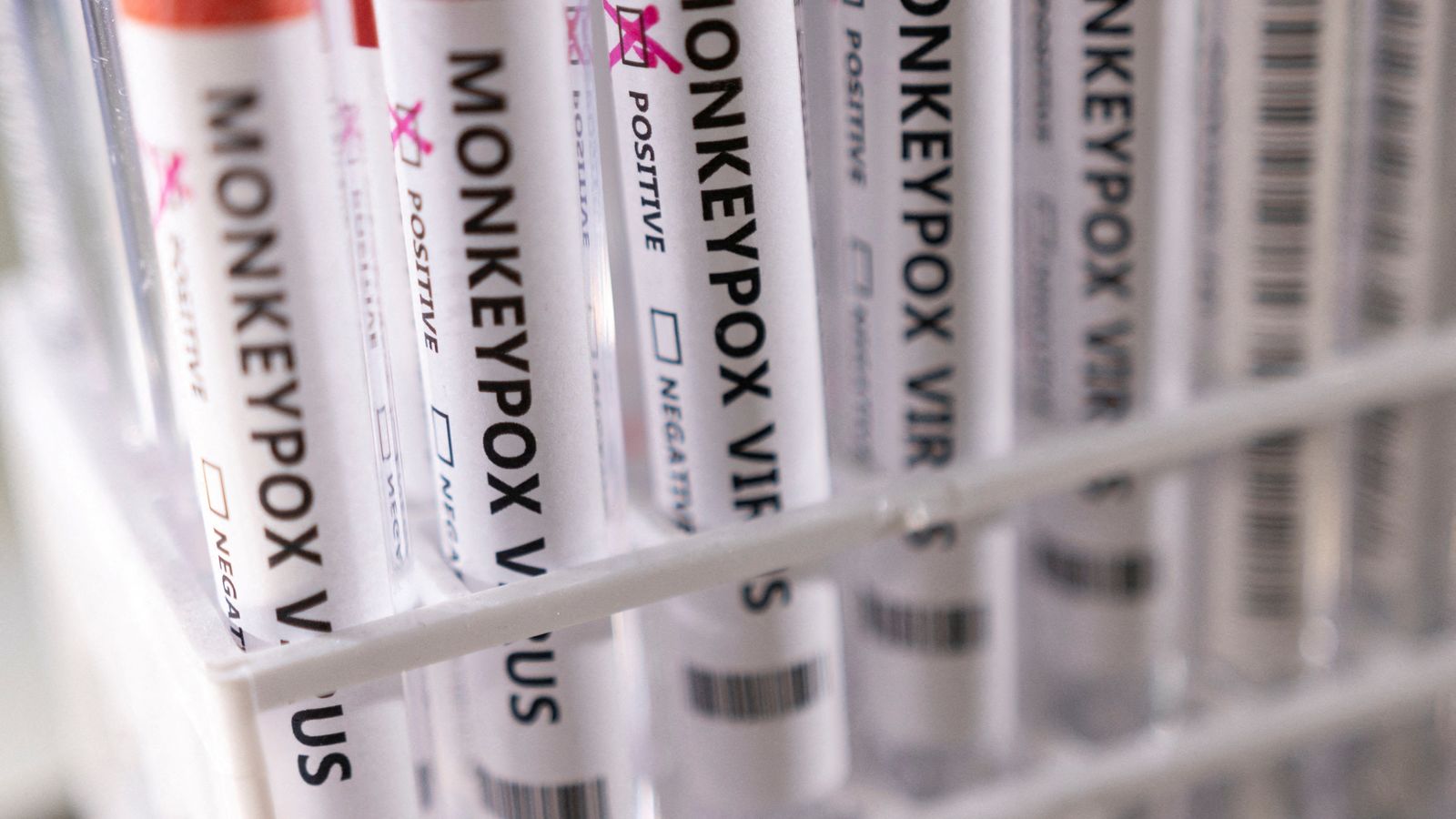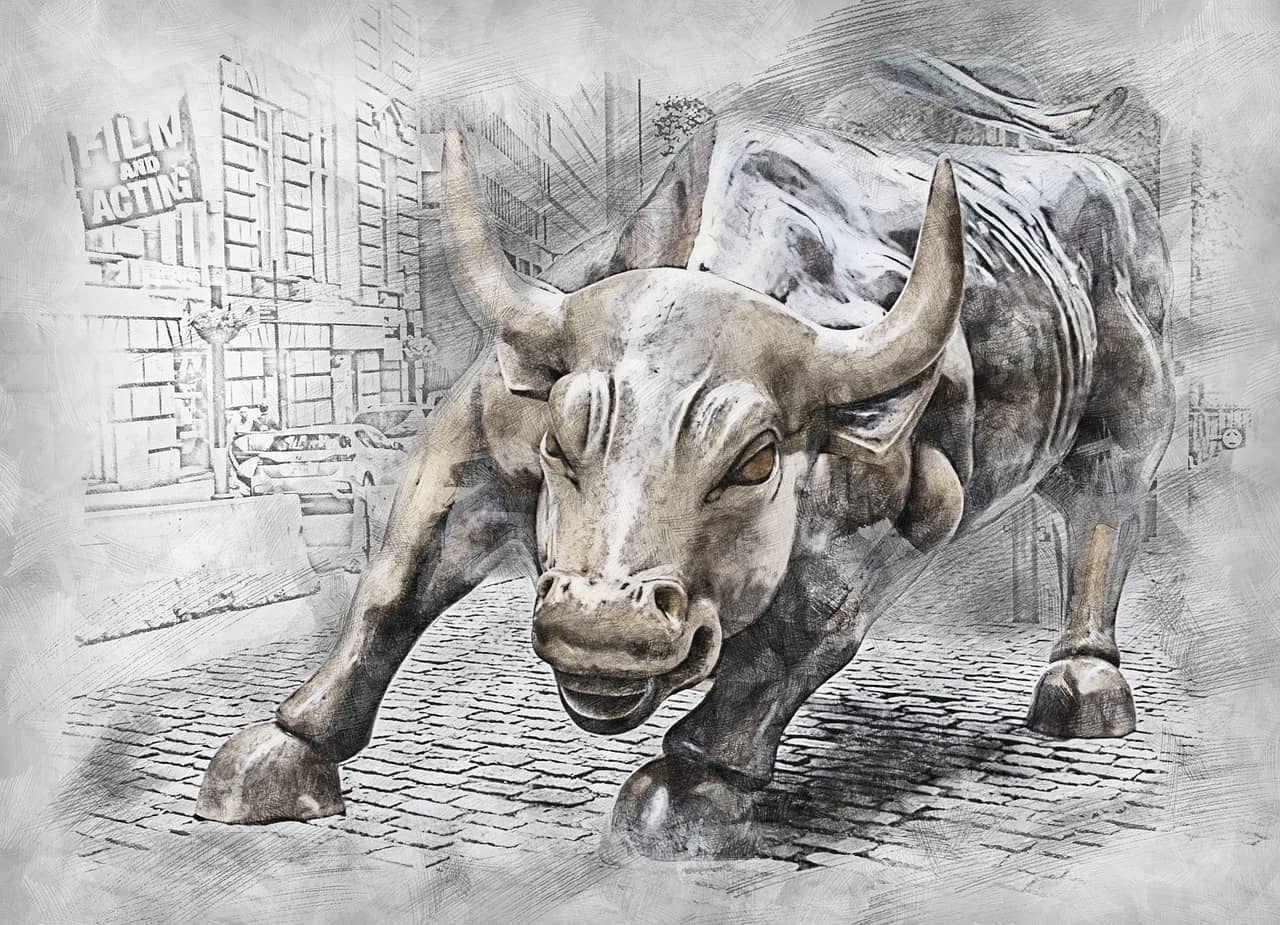Health authorities have been warned to keep a look out for monkeypox occurring in patients at the same time as COVID-19 after a case was identified in Italy.
It comes after a 36-year-old man sought treatment when he showed symptoms following a trip to Madrid from his home in Sicily.
He had suffered a fever, headache, fatigue and sore throat to begin with, but also had a number of large spots, which began to bulge.
A research paper published in the Journal of Infection said tests on the man found that he was not just suffering from the coronavirus, but also had monkeypox.
Further tests diagnosed he was also HIV positive, it added – the first case of infection by the three viruses.
The authors of the study said that as monkeypox and COVID share “the symptoms of fever, lymphadenopathy, headache, sore throat and fatigue”, it can be “difficult for physicians to perform the correct diagnosis, also considering that not all patients with monkeypox develop skin lesions and that COVID-19 may rarely present with rash and vesicles (spots)”.
They said that although it is too early to say whether the combination of the viruses may result in a worse outcome, doctors should be aware that it could happen as there is no widely available treatment in the event that they co-occur.
The authors of the paper said: “As this is the only reported case of monkeypox virus, SARS-CoV-2 and HIV co-infection, there is still not enough evidence supporting that this combination may aggravate patient’s condition.
“Given the current SARS-CoV-2 pandemic and the daily increase of monkeypox cases, healthcare systems must be aware of this eventuality, promoting appropriate diagnostic tests in high-risk subjects, which are essential to containment as there is no widely available treatment or prophylaxis.”
Case ‘highlights’ need to examine patients’ history
The man, who was double vaccinated against COVID, spent five days in Spain from 16 to 20 June 2022 and nine days later came down with a temperature of 39C, accompanied by sore throat, fatigue, headache and pain in his groin.
On 2 July he tested positive for COVID and later the same day a rash started to develop on his left arm which turned into small, painful spots surrounded by a red ring on his torso, lower limbs, face and bottom.
The spots continued to swell and three days later he went to the emergency department of the Policlinico “G. Rodolico – San Marco” University Hospital in Catania, Italy, where he was transferred to the infectious diseases unit.
He told doctors that he had been treated for syphilis in 2019 and had performed an HIV test with a negative result in 2021.
Because of his symptoms, they decided to carry out a series of tests and found he was positive for the three viruses, with monkeypox being identified as from the West African clade, the variant responsible for the Spanish outbreak, and the COVID variants being BA.5.1, one of the two main variants causing infections around the world.
By the third day in hospital, almost all skin lesions began to turn to crusts and eventually turned into scars. He was given treatment for HIV and was later discharged.
Doctors say his case highlights the need to examine the history of patients in their efforts to come up with a diagnosis, as a failure to diagnose correctly could put others at risk.
The authors, led by Santi Nolasco, said the man had reported of having unprotected sex with men during his stay in Spain.
They said: “This case highlights how monkeypox and COVID-19 symptoms may overlap, and corroborates how in case of co-infection, [patient history] collection and sexual habits are crucial to perform the correct diagnosis.
“Our case emphasises that sexual intercourse could be the predominant way of transmission. Therefore, complete STI screening is recommended after a diagnosis of monkeypox.
“In fact, our patient tested positive for HIV-1 and, given his preserved CD4 count, we could assume that the infection was relatively recent.
“To note, the monkeypox oropharyngeal swab was still positive after 20 days, suggesting that these individuals may still be contagious for several days after clinical remission. Consequently, physicians should encourage appropriate precautions.”
The paper says since January 2022, more than 16,000 people in over 74 countries have been affected by monkeypox and the COVID subvariants BA.4 and BA.5 are currently responsible for more than a million cases per day worldwide.







